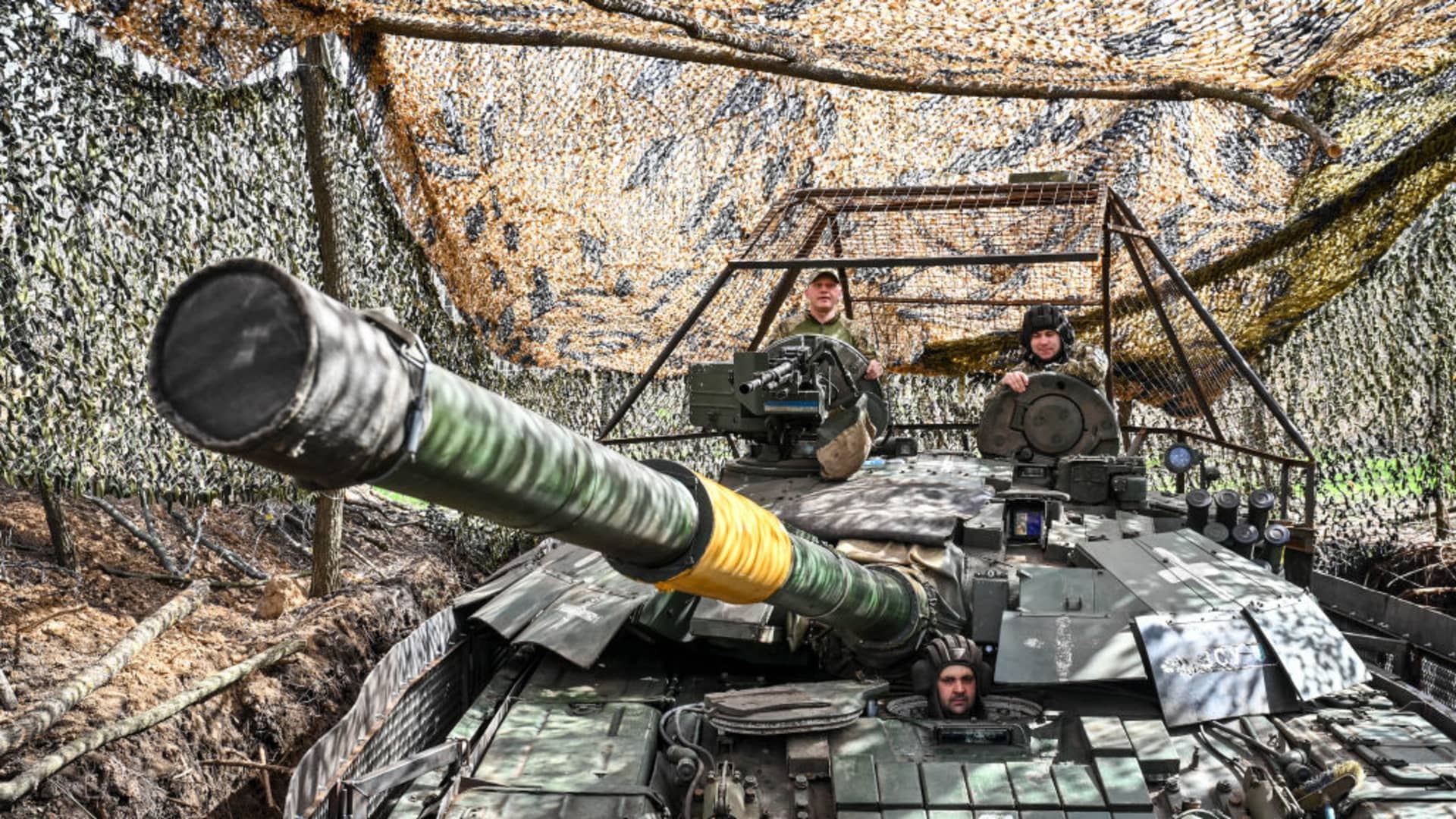Three servicemen are staying in a tank of the 1st Tank Brigade of the Ukrainian Ground Forces, concealed by camouflage nets in Ukraine, on March 31, 2024. (Photo by Ukrinform/NurPhoto via Getty Images)
Ukrinform | Nurphoto | Getty Images
Global military spending reached a record high of $2.4 trillion in 2023 amid a “global deterioration in peace and security,” the Stockholm International Peace Research Institute said Monday.
The figure marked a 6.8% increase from 2022 and the sharpest year-on-year jump since 2009, the institute said in a report on military spending trends.
“The unprecedented rise in military spending is a direct response to the global deterioration in peace and security,” Nan Tian, senior researcher in SIPRI’s military expenditure and arms production programme, said in a statement.
Military expenditure has been rising for nine years straight, and military spending bolstered in all regions of the world for the first time since 2009, the report found. This was linked to the war in Ukraine, as well as to growing tensions in the Middle East and other developments, such as a pushback against organized crime and gang violence in Central America and the Caribbean.
Ukraine and Russia, which are actively at war, topped the list for the countries that increased their military spending the most in 2023, by 51% and 24%, respectively. Russia’s actual military expenditure remained far above that of Ukraine at an estimated $109 billion, which makes it the third biggest military spender internationally, behind the U.S. and China.
This figure is likely an underestimation, the report noted, as Russia’s financials are highly opaque, and the budget allocated to military spending is supplemented by businesses, individuals and organizations.
Ukraine’s military spending meanwhile totaled around $64.8 billion — around 59% the amount of Russia’s spending, but 37% of Ukraine’s GDP, the report said. The figure does not include the tens of billions of military aid that Kyiv receives, which narrow the gap between its expenses and those of Russia.
The war between Russia and Ukraine also drove military spending higher elsewhere, prompting countries to think differently about their security outlook, Lorenzo Scarazzato, a military expenditure and arms production researcher at the SIPRI said in a statement.
“This shift in threat perceptions is reflected in growing shares of GDP being directed towards military spending, with the NATO target of 2 per cent increasingly being seen as a baseline rather than a threshold to reach,” he said.
Donald Trump, former president and U.S. presidential candidate in this year’s elections, in February warned that he would not protect NATO member countries that lag on their committed payments, in the event of Russian attacks. The comments stirred a political storm among allies and prompted eventual recognition from NATO Secretary-General Jens Stoltenberg that some members are not funding enough.
Poland’s military spending soared by 75% in 2023, while Germany’s and the U.K.’s expenses rose by 9% and 7.9% respectively, the SIPRI report found. The U.S., which spends the most on its military, logged a 2.3% year-on-year hike in such spending to $916 billion in 2023.
China, the second largest military spender in between the U.S. and Russia allocated an estimated $296 billion to its military, around 6% more than in the previous year, according to estimated figures.
Tensions in the Middle East also significantly contributed to the overall rise in global military spending, the report said. Spending in Israel, which is also in active conflict, jumped 24% to $27.5 billon.
“The spending increase was mainly driven by Israel’s large-scale offensive in Gaza in response to the attack on southern Israel by Hamas in October 2023. Israel’s monthly military expenditure has risen substantially since the start of the war in Gaza: it went up from an average of $1.8 billion per month before October to $4.7 billion in December 2023,” the report said.

